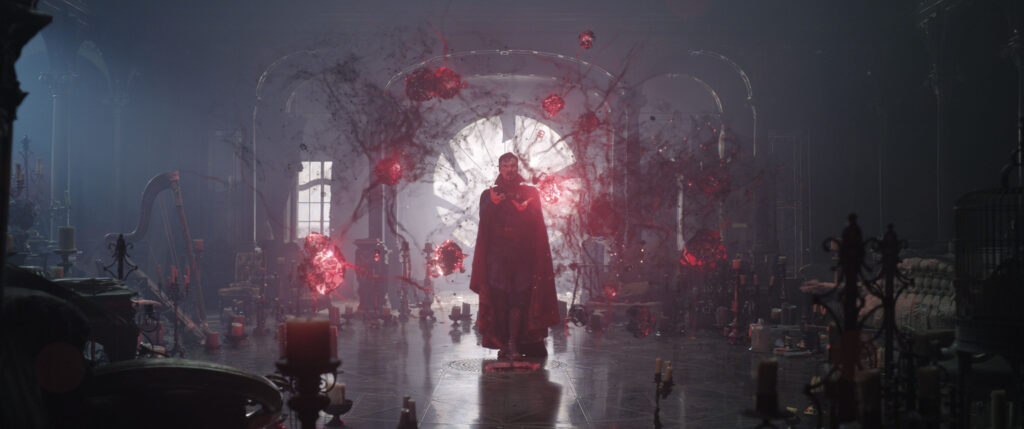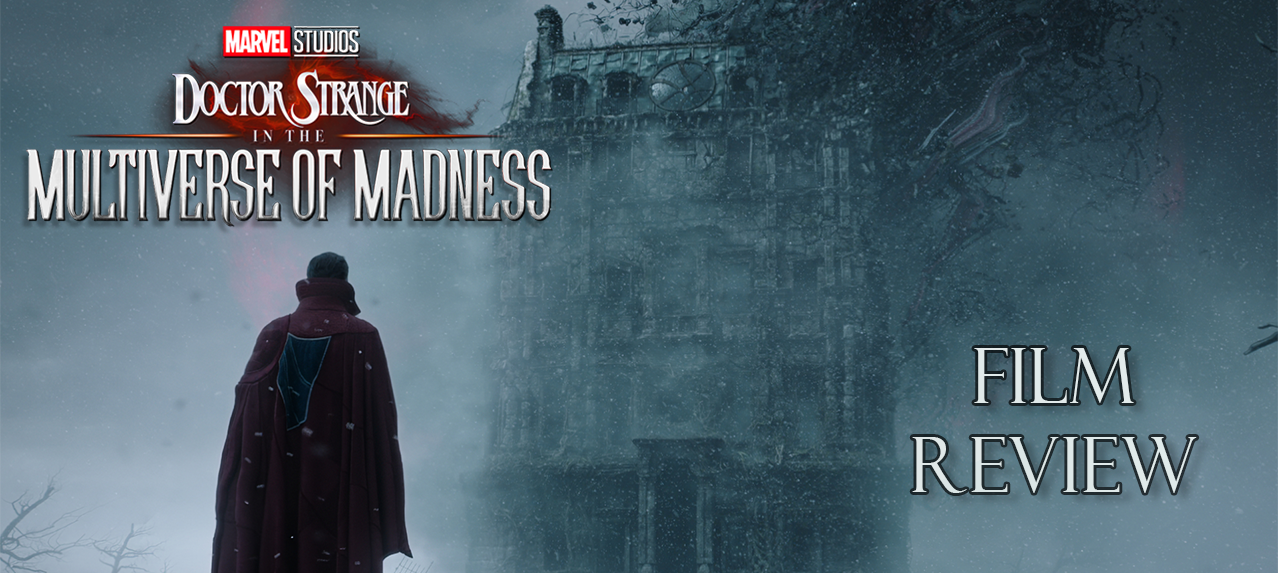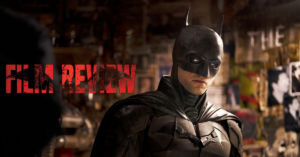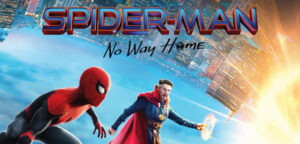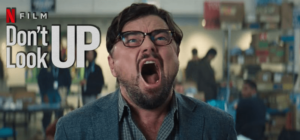The Marvel Cinematic Universe (MCU), in its attempts to build a cohesive narrative across an expansive body of work, has often been criticized for diminishing the role of a movie director. When the director of the first film, Scott Derrickson, announced his departure from this sequel, we heard those two familiar words all filmmakers dread: creative differences. It’s the same sentiment shared when Edgar Wright left 2015’s Ant-Man for the same reason. Similarly, albeit a bit quieter, Ava DuVernay exited an early development for Black Panther, citing “different ideas about what the story would be.” With so much work going into their inter-connectivity, a director’s creative vision to make these superhero films a unique spectacle often gets left in the lurch.
But here, with Sam Raimi’s long-awaited return to superhero movies, we get a glimmer of the director’s trademarks shining through the better parts of what could have been a very cut-and-dry picture. Doctor Strange in the Multiverse of Madness is a breath of fresh air to the Marvel “formula,” thanks to Raimi’s uncanny visual style and direction. His kinetic flair with the camera, flying through various set pieces, and staging intense musical duels add some necessary gravitas to the magical feats performed by the titular sorcerer. More than anything, this feels like a unique feather in the Marvel cap as they seem to be attempting a further break from their self-produced conventions.
I use the word ‘attempting’ because, despite this step in a new direction, the story falters trying to balance so much. A lot is being asked of it; pushing the multiverse plotline displayed in Disney+ shows Loki and What If…?, as well as the well-received Spider-Man: No Way Home, introduce the universe-hopping heroine America Chavez, convey the descent of Wanda Maximoff from hero to villain in her grief, and harken back to the good doctor’s story (if you can recall what that might be after supporting appearances since his 2016 solo-outing). It’s so much to juggle, and of course, the ball drops a few times.
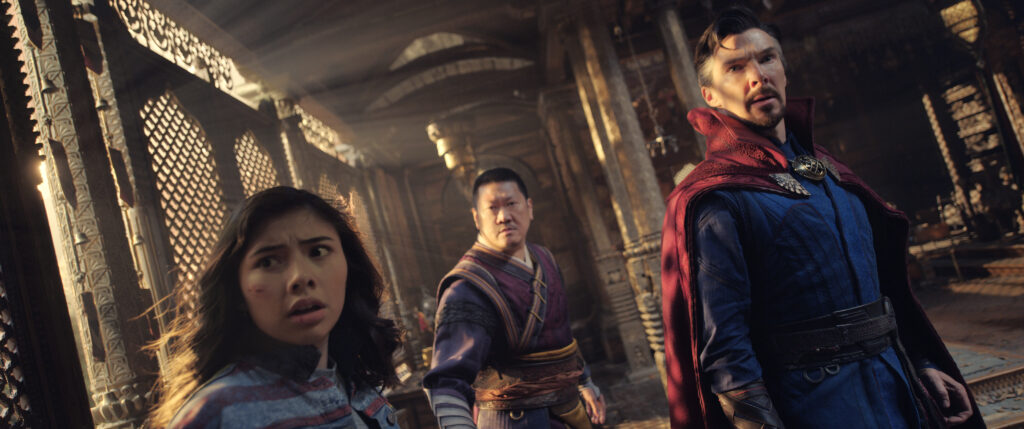
Following the events of Endgame (and casually glossing over his role in No Way Home), Stephen Strange (Benedict Cumberbatch) puts on another brave face to attend the wedding of his ex-fiancee, Dr. Christine Palmer (Rachel McAdams). Some inner turmoil comes up about Strange’s “need to be the one holding the knife,” a sentiment shared by his former lover and, after an awkward interaction, rival surgeon Nicodemus West (Michael Stuhlbarg, with a surprising poster credit). But the lovesick doctor can’t wallow too long as he’s called into action by the cries of teenage, inter-dimensional traveler America Chavez (Xochitl Gomez), who is being chased through the Manhattan streets by a one-eyed monster.
Stephen recognizes her from his dreams, including the opening fight scene we watched featuring a pony-tailed Defender Strange. After being saved by Strange and the new Sorcerer Supreme, Wong (Benedict Wong), America reveals that Stephen’s dreams are windows to his alternate lives in the multiverse; some of these parallel Stranges have been helping Chavez run from a powerful being who seeks to take her universe-hopping abilities for themselves, which would mean her death and calamity across the cosmos.
Sensing that witchcraft is at play here, he turns to Wanda Maximoff (Elizabeth Olsen) for assistance, only to realize that she has been the one hunting America. After the Westview incident, her possession of the Darkhold, a book of forbidden magic, has drawn her to America’s power, providing a path to find different versions of the children she lost. The book offers the spells necessary to “dream-walk” or slip into the mind of alternate versions of oneself at the cost of moral corruption. But America’s abilities would allow a more permanent move for Wanda, who is relentless in her goal to be reunited with her family (except Vision, I guess; he’s off being uncomfortably white somewhere). Her maddening pursuit pushes Doctor Strange and America to Earth-838, a universe where a team known as the cameo-laden Illuminati see any version of Stephen Strange as a threat to the infinite worlds. To defeat Wanda, Doctor Strange and America (with help from familiar faces) must find the Book of Vishanti, the antithesis to the Darkhold and the key to saving the multiverse.
I love Benedict Cumberbatch’s portrayal here, overcoming the sidelining his character went through after his first appearance in 2016. We saw Strange regain lost-confidence and overcome disbelief by performing magic to save the day in his origin story. But, in his appearances throughout the later Avengers movies, his growth stagnated. Sure, he learned how to play on a team a bit, but we’ve never gone further than that except for his knack for believing his way is the right way. In Multiverse of Madness, we’re called back to Strange’s less becoming character traits and the consequences of his actions to take down Thanos by allowing the Blip to happen. He uses a peculiar choice of words when defending himself to Dr. West: “I made the only play we had.”
After watching Defender Strange attempt to take America’s powers so that they’re in “better hands,” you get a sense right away of where Strange starts and where he must go. He’s always had or taken control over complex scenarios; now, he must learn to let that go and put the knife in other people’s hands. Witnessing the failings of two other alternate Stranges gives him the push he needs to relinquish this control to America, who puts an end to Wanda’s rampage. A satisfying change for the character, showing that people do grow…eventually. I don’t want to make any allusions to the well-crafted Everything Everywhere All at Once, but there is a parallel to be drawn to how our main Strange can overcome his insecurities just as Evelyn was the only one capable of defeating Jobu Tupaki (I’ll make a review of that film very soon).
Speaking of Wanda, I loved the direction Marvel took here. If you think about it, the decision to go for it and push a well-liked character from your biggest movies and most popular streaming show down the path of villainy is enterprising. We left Wanda with room for redemption after the events of Wandavision as she freed the town of Westview and isolated herself in her grief. But it turns out that letting one of the most powerful beings ruminate on her loss with a book of dark magic is not a good idea.
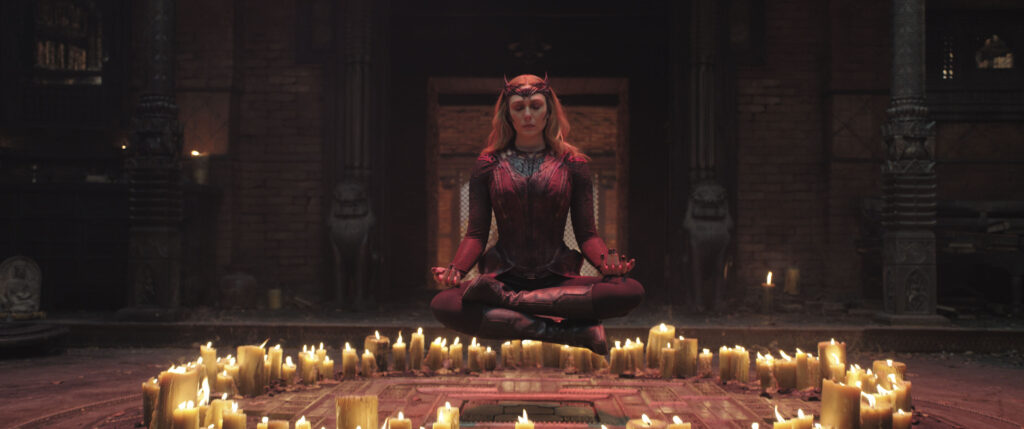
Then it won't be Wanda who comes for her...It will be the Scarlet Witch.
— Wanda Maximoff, revealing her true nature to Doctor Strange
Olsen commands the screen to take her rage and drive seriously, even if the performance tinges on the Raimi-camp in some scenes. From her confrontation with Strange at Kamar-Taj to the final scene with her children/alternate self on Earth-838, Olsen doesn’t relent in exuding superiority over everyone else as she searches for her children across the multiverse. “Hell hath no fury like a mother scorned” was written in big red letters on the top of every page in her script, I’d wager. When faced with the realization of how far she has fallen during her quest, she comes back around and ends the character satisfyingly (though I highly doubt this is the last we see of the Scarlet Witch!).
Sadly, America Chavez takes the brunt of Multiverse of Madness‘ troubled balancing act. A tad underdeveloped, her arc takes a back seat to the various objectives of the film. She gets a promising start as someone lacking confidence/trust in her abilities. Her chemistry with Strange has that reluctant student/teacher vibe, which I found enjoyable.
She’s not initially trusting our Strange since Defender Strange tried to take Chavez’s powers himself, believing he could control them better. Of course, the MCU Strange promises that he’s nothing like that and will follow a different path to help her, but we know him, and he knows himself. That’s precisely what he would’ve done, but now he must work to not to make the same mistake and save Chavez.
Having her accidentally send her parents across the multiverse due to her lack of control was a good point, it gave personal stakes for why America is afraid to use her powers. But after being confined by the Illuminati, her growth is dropped almost entirely. It is only through Strange’s self-improvement that America can save the day, rather than of her own volition or charge. Gomez’s performance shines despite the flat-lined development of America, so I’m expecting room for expansion in her future appearances.
Raimi’s presence as a director was felt throughout my whole theatrical experience. I was surprised by how much his style was present in the film. The horror elements of the last act cemented the Raimi stamp. From the second our Doctor Strange inhabited the corpse of Defender Strange by dream-walking (HYPOCRITE!), I knew that we were in for a spectacle unlike anything we’ve seen recently. Just from its look alone, as the possessed zombie builds a cloak out of Evil Dead-esque spirits to battle with Wanda, my jaw was entirely dropped.
When Wanda chases Doctor Strange, America, and Earth-838’s Christine Palmer through the Illuminati catacombs, you feel eerie tension. Will she catch up with them? How will they escape? And that final slo-mo moment, where the characters question if they managed to stop her with a flooded corridor, Wanda jumps from nowhere. It’s the perfect jump scare and filled me with fear and suspense.
It’s kinetic; it’s flashy…it feels like the original Spider-Man film in its visuals. I can’t express enough how not-ugly this film is at any point in camera. VFX-wise, a few spotty moments of green screen/compositing weren’t refined. There’s a moment where the camera perspective and focus pulling don’t work with the background visual effect against the live-action elements. But I overlook those moments against the overall memory of seeing such excellent shot composition.
His collaboration with Danny Elfman to make a spectral, eccentric score was perfect! Many little moments jumped out to me, like Wanda revealing her farm hex and the duel between Sinister Strange, a version where the Darkhold corrupted him, and MCU Strange involving musical notes as weapons. It’d be a coin toss over who had more fun with that, Elfman to compose it or Raimi to shoot it. It’s mythic sounding, full of ominous tones and classical string pieces to accentuate the natural flow of Raimi’s shooting style.
I would hate to forget yet another emotional journey to be realized, but I think it’s important to recognize what the filmmakers were going for. To close up the failed relationship between Doctor Strange and Christine Palmer, they felt it necessary to make it another facet of himself and for the film that Strange must confront.
While the plotline succeeds and Strange’s lingering feelings for what could have been dissipate, I feel this was a shoehorned line to include. It’s too much for the film to explore and keep up with; we’re constantly flip-flopping between which aspect of our troubled doctor needs healing; his heart or his ego.
McAdams had great moments to make the arc relevant, politely telling off her ex-fiancee at her wedding about why they didn’t work out. Her multiversal presence is felt as America explains that, of all the Doctor Strange’s she’s encountered, none of them could keep a relationship with Christine. In yet another show that MCU Strange is not like his other selves, Strange is honest with the Christine of Earth-838, who is aware of what brought down Supreme Strange and works with the Illuminati to protect the multiverse. He admits his fears and apologizes to her (and in a way, to every Christine) for never getting it right between them, cleansing himself of his one-sided heartache.
When Wanda chases Doctor Strange, America, and Earth-838’s Christine Palmer through the Illuminati catacombs, you feel eerie tension. Will she catch up with them? How will they escape? And that final slo-mo moment, where the characters question if they managed to stop her with a flooded corridor, Wanda jumps from nowhere. It’s the perfect jump scare and filled me with fear and suspense.
It’s kinetic; it’s flashy…it feels like the original Spider-Man film in its visuals. I can’t express enough how not-ugly this film is at any point in camera. VFX-wise, a few spotty moments of green screen/compositing weren’t refined. There’s a moment where the camera perspective and focus pulling don’t work with the background visual effect against the live-action elements. But I overlook those moments against the overall memory of seeing such excellent shot composition.
His collaboration with Danny Elfman to make a spectral, eccentric score was perfect! Many little moments jumped out to me, like Wanda revealing her farm hex and the duel between Sinister Strange, a version where the Darkhold corrupted him, and MCU Strange involving musical notes as weapons. It’d be a coin toss over who had more fun with that, Elfman to compose it or Raimi to shoot it. It’s mythic sounding, full of ominous tones and classical string pieces to accentuate the natural flow of Raimi’s shooting style.
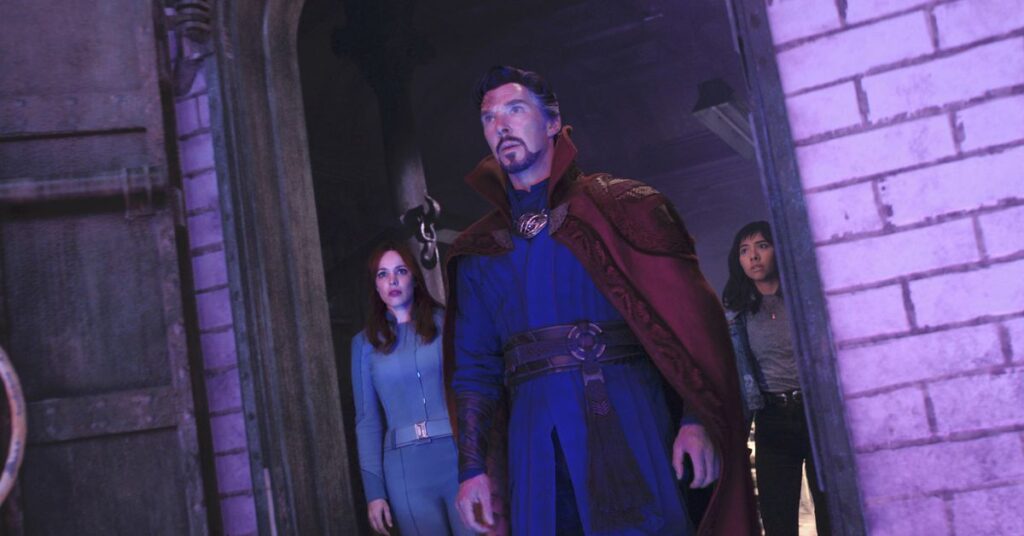
I love you. I love you in every universe...It's not that I don't wanna care for someone or have someone care for me. It's just...I get scared.
— Doctor Strange to Earth-83 Christine Palmer
It may sound well-structured because of my summarization, but let’s attribute that more to my being a Marvel fan (re: HUGE NERD) than to cinematic clarity. It was a love confrontation told with some heart, but it was explored a few and far between to keep coming back. I wouldn’t say it was interrupted, but a far more prevailing theme of trust between Strange and his fellow heroes was abundantly compelling.
Everyone wants to talk about the cameos featured amongst the infamous Illuminati of Earth-838. In the comics, they are a group of high-powered/prominent heroes who must “make the difficult decisions no one else could” within the shadows. Here, they are comprised of Sorcerer Supreme Baron Mordo (Chiwetel Ejiofor), Charles Xavier (the returning Patrick Stewart), Captain Carter (Hayley Atwell), Captain Marvel (Lashana Lynch), Inhuman King Black Bolt (Anson Mount), and the “Smartest Man Alive” Reed Richards (John f**king Krasinski).
While it may seem like a drawn-out point of the film, the Illuminati pushes Strange to realize the downside to his heroic yet selfish methodology. After witnessing the fall of his counterpart through Xavier’s telepathic projections, he begins to understand his faults and where they could lead him. This is further coupled with his meeting the Sinister Strange counterpart, who has already lost himself to the Darkhold and is an example for our Strange to avoid.
I don’t know what aspect of the film led to creative difficulties between Derrickson and Marvel Studios. I don’t see much that he could’ve had a problem with. And Raimi, as another horror director that Derrickson admired, seemed to have no issues either. His compromise to Marvel’s requests and his film trademarks looks relatively clear, leaving me to wonder what Marvel didn’t agree on with Derrickson and his writer, C. Robert Cargill, that they did with Raimi.
In either case, Doctor Strange in the Multiverse of Madness dared to go against all fan (and my) expectations. People had many theories: Tom Cruise would play Superior Iron Man, Loki would appear with the TVA, Wanda would establish mutants in the main Marvel continuity, etc. Fan art was drawn, cameos were dreamed about, and…nothing like that happened.
We got a gamble from one of the most important independent filmmakers of our time working with a studio that many criticize for playing it safe and taking little cinematic crapshoots. With a clear heart, a powerful new ally, and a world-opening cliffhanger to resolve, I’m happy that this film went beyond the fandom.
